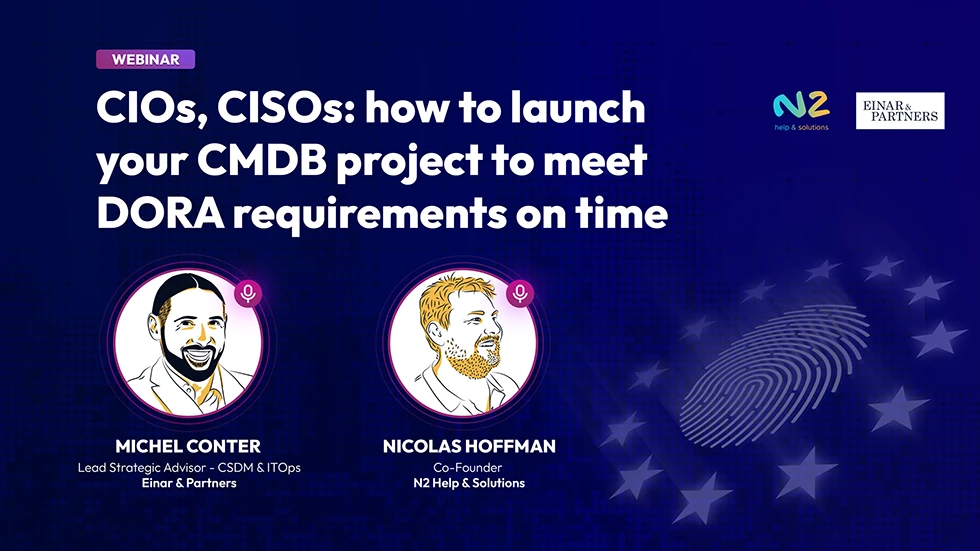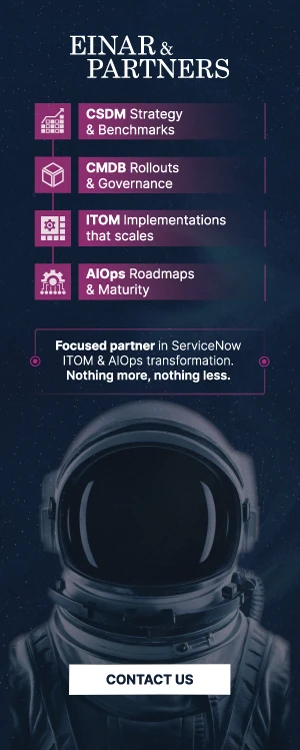
In a recent discussion, Nicolas Hoffman from n2 and Michel Conter from Einar & Partners dove deep into the implications of the Digital Operational Resilience Act (DORA) on IT operations management. Both experts shared their insights on how financial institutions can leverage ServiceNow to meet DORA’s stringent requirements. Here’s a recap of their conversation, highlighting the key takeaways.
Understanding DORA: The Need for Resilience
Michel Conter began by explaining that DORA is a significant regulation introduced by the European Union, aimed at standardizing risk management across financial institutions. This regulation emphasizes the need for financial entities to manage internal and external risks effectively. Michel highlighted that DORA is not just about managing cyber threats but also about ensuring that organizations can report and act on major incidents swiftly. The ultimate goal of DORA is to build a more resilient financial sector capable of adapting to the ever-evolving digital landscape.
Leveraging ServiceNow for DORA Compliance
Nicolas and Michel discussed how ServiceNow plays a crucial role in helping organizations comply with DORA. As Michel pointed out, ServiceNow is more than just a platform for managing IT operations; it’s a comprehensive solution for digitalizing business processes across the enterprise. The platform’s core strength lies in its Configuration Management Database, which consolidates all critical information about an organization’s IT infrastructure and services.
The Journey to Effective CMDB Management
One of the critical points discussed was the importance of creating a CMDB that reflects the true state of the organization’s IT environment. Michel stressed that automating data collection is vital, but it’s equally important to understand the processes and workflows before implementing automation. He advised organizations to start with manual processes to gain a thorough understanding before moving on to automation.
During the discussion, Michel shared a real-world example of a financial institution with over 500 applications. The institution faced the challenge of integrating these applications into a unified CMDB. Through workshops and collaboration with various teams, they managed to manually map out the most critical applications. This approach, although time-consuming, laid a strong foundation for future automation efforts.
The Value of Continuous Improvement
Both Nicolas and Michel underscored the importance of continuous improvement in managing a CMDB. They noted that the CMDB should be seen as a living entity that evolves with the organization. Continuous monitoring, governance, and the inclusion of feedback loops are essential for maintaining the accuracy and reliability of the CMDB. This approach ensures that the organization remains compliant with DORA and other regulatory requirements.
Meeting DORA’s Tight Deadlines
With the deadline for DORA compliance fast approaching, Michel highlighted the urgency for financial institutions to act now. He suggested prioritizing the most critical areas first and demonstrating to auditors that the organization is actively working towards full compliance. Michel also noted that while the journey to full compliance may be challenging, it’s crucial to show a clear strategy and commitment to meeting DORA’s requirements.

Conclusion
Nicolas and Michel’s discussion provided valuable insights into how financial institutions can navigate the complexities of DORA using ServiceNow. By building a robust CMDB, automating data collection, and continuously improving their processes, organizations can not only comply with DORA but also enhance their overall operational resilience.
If you’re looking to stay ahead of the curve and ensure your organization is DORA-compliant, embracing the principles discussed by Nicolas and Michel will be essential. Remember, the path to resilience starts with understanding, followed by strategic action and continuous improvement.
For more insights and detailed strategies, watch the full discussion embedded below.








